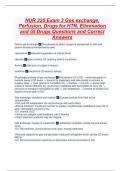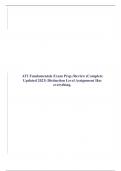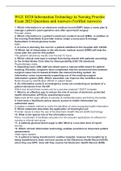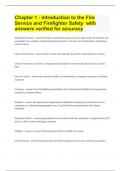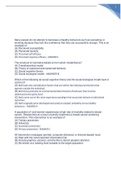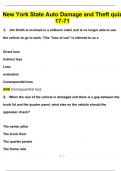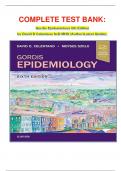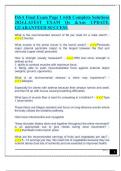Exam (elaborations)
NUR 325 Exam 3 Gas exchange, Perfusion, Drugs for HTN, Elimination and GI Drugs Questions and Correct Answers
- Course
- Institution
Define gas exchange The process by which oxygen is transported to cells and carbon dioxide is transported by cells Hypoxemia reduced oxygenation of arterial blood Hypoxia state at which O2 reaching cells is insufficient Anoxia total lack of oxygen in tissues Ischemia Insufficient O2 blood to ti...
[Show more]
